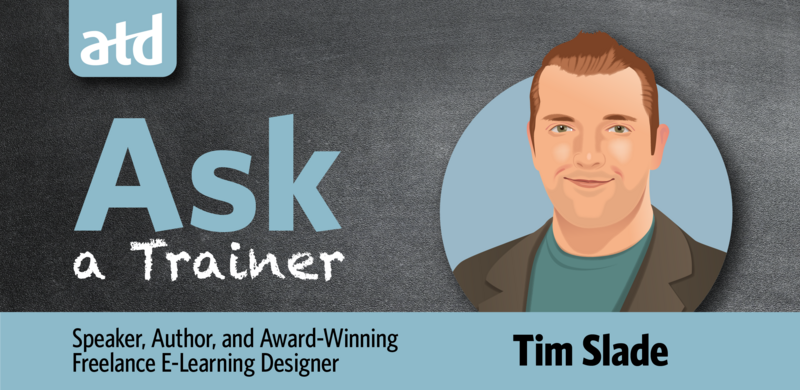ATD Blog
Ask a Trainer: ADDIE Versus SAM
Tue Jan 28 2020

Tim,
I’d like to get your thoughts on something that’s been stumping me for quite some time. ADDIE versus SAM—which one is better?
Here’s why I ask. I’ve been working as an instructional designer for the past few years, and during that time, I’ve familiarized myself with the ADDIE and SAM models. While I understand the differences between them, neither model seems to really help me when it comes to designing instructionally sound, performance-based learning content. And isn’t that what these models are supposed to help me do?
I’d like to get your thoughts on this. Which model will help me design learning content that actually delivers results?
I love this question because it’s something I too struggled with for a long time early in my career. Like you, I understood each of the models, but neither really helped when it came to designing and developing effective learning. So, what gives?
Well, part of the confusion is caused because ADDIE and SAM are often touted as “instructional design models.” In my opinion, this really isn’t the case. The truth is, they are more akin to project management models that are focused on process rather than design.
So, which model should you use? Well, I think it totally depends on your organization, your stakeholders, the project, and your preferences. There are times when ADDIE (a waterfall approach) makes more sense, and there are times SAM (an iterative approach) is the better choice.
Regardless of which one you use, it still doesn’t answer your core question: How can you design instructionally sound, performance-based learning content? Luckily, creating learning content that drives measurable results has little do with whether you choose to follow ADDIE or SAM.
While there’s a lot that goes into creating good learning content, here are three questions that will point you in the right direction.
Question #1: Is It the Right Solution for the Performance Issue?
The answer to this first question is the most critical one you need to answer because it will tell you whether or not training will help you solve the performance issue in the first place. What you don’t want to do is create a learning solution for a non-learning problem.
To answer this question, start by conducting a needs analysis to help you validate that the performance issue exists and what’s causing it. You may discover there are other contributing factors that have nothing to do with a lack of knowledge or skill and can’t be fixed with training.
Question #2: Is It Designed for How People Learn?
This second question challenges you to design your training content in a way that aligns with how people (I’ll assume adults) learn. This means that you’re not just dumping a bunch of bullet points on a slide, adding a Next button and a quiz, and calling it learning.
To answer this question, familiarize yourself with adult learning theory and the principles of instruction and ensure you’re creating training experiences that align with these practices.
Question #3: Is It Design for What People Need to Do?
This final question is a continuation of the second one, as it challenges you to focus on behaviors rather than knowledge alone. As I mentioned previously, you can’t simply dump information on your learners and expect results. Instead, you need to create learning experiences that challenge your learners to practice their skills.
Determine how you’ll create practice activities within your learning that mimic the actual situations your learners will experience on the job. One way to do this is by following Cathy Moore’s process of action mapping, which focuses on the creation of practice activities that align with real-world business goals.
So, should you go with ADDIE or SAM when it comes to creating performance-based learning content? Well, it doesn’t really matter because that’s not really the question you need to be asking yourself. Choose the model you’re most comfortable with and ensure you’re designing learning experiences that are:
the right solution for the performance issue
designed for how people learn
focused on what people need to do.
I hope these tips help! Best of luck!
Tim
Do you have a learning question you’d like me to tackle? You can email them to [email protected]. Also, visit the Ask a Trainer hub to check out all of your questions and my answers.
We welcome your comments and engagement on these posts. All posts are reviewed to ensure appropriateness based on ATD’s requirements for postings in our online communities.
Please note: Content shared in this column is provided by the author and may not reflect the perspectives of ATD.

